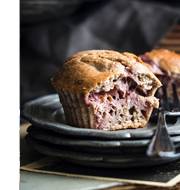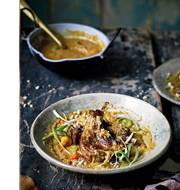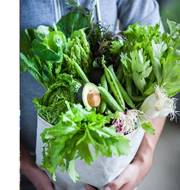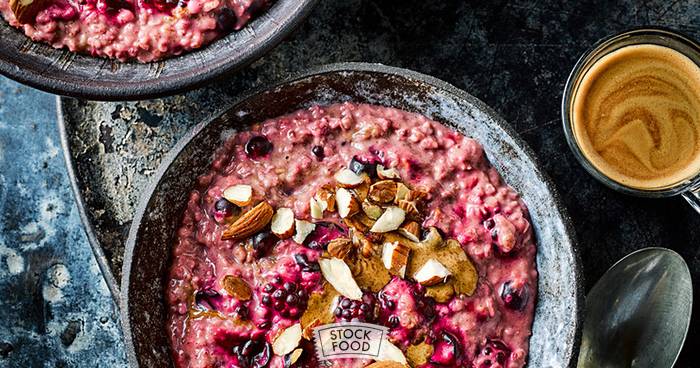The Food Trends 2020 is all about individuality and sustainability from individually mixed cocktails to alternative healthy flours, freshly ground nuts, and ideas to combat food waste.
Cocktails 2.0 – From the Bar of the Alchemists
 Lovingly brewed craft beers and homemade distilled gins initiated a change in the bar scene a few years ago. We’ve shifted away from the standardized drinks of the American bar to more and more individually designed cocktails with home-brewed ingredients. In the meantime, new mixologists are reinventing their bar menus. You will always be able to order a dry martini from any of them, but there are far more offerings now from behind the bar. The heroes of these new bars work like good chefs. Avocados are cleverly puréed in the food processor. Delicate aromas are extracted with the help of butter or through ultrasonic extraction, which is generally only used for traditional perfume production. It goes without saying that young bartenders create their own fermented ingredients such as ginger beer, coconut kefir, or kombucha in all flavors.
Lovingly brewed craft beers and homemade distilled gins initiated a change in the bar scene a few years ago. We’ve shifted away from the standardized drinks of the American bar to more and more individually designed cocktails with home-brewed ingredients. In the meantime, new mixologists are reinventing their bar menus. You will always be able to order a dry martini from any of them, but there are far more offerings now from behind the bar. The heroes of these new bars work like good chefs. Avocados are cleverly puréed in the food processor. Delicate aromas are extracted with the help of butter or through ultrasonic extraction, which is generally only used for traditional perfume production. It goes without saying that young bartenders create their own fermented ingredients such as ginger beer, coconut kefir, or kombucha in all flavors.
Where every ingredient and every detail is individually designed, non-alcoholic cocktails have newfound importance. While the so-called mocktails seemed more like an imitation for bores, bartenders of the new generation are finally treating non-alcoholic mixed drinks with the same dedication as their alcoholic counterparts.
New Flours Made From Vegetables and Fruits
 Apple, banana, sweet potato, pumpkin, beetroot, or even cauliflower as a type of flour? Sure, you can’t bake an airy baguette with these novel fruit and vegetable flours like the gluten-free flour alternatives of the first generation. While teff and millet flour were primarily intended to be substitutes for wheat flour, these new flour varieties are genuine alternatives. For example, flour from harvested green bananas tastes subtle and nutty no matter what it is in, whether its dips, sauces, or of course, banana bread.
Apple, banana, sweet potato, pumpkin, beetroot, or even cauliflower as a type of flour? Sure, you can’t bake an airy baguette with these novel fruit and vegetable flours like the gluten-free flour alternatives of the first generation. While teff and millet flour were primarily intended to be substitutes for wheat flour, these new flour varieties are genuine alternatives. For example, flour from harvested green bananas tastes subtle and nutty no matter what it is in, whether its dips, sauces, or of course, banana bread.
Thanks to serotonin and tryptophane banana flour can make you as happy as eating a ripe banana. Beetroot flour not only contains lots of fiber but also natural color, and a fruity sweetness for smoothies or desserts. Cauliflower flour may be less suitable for birthday cakes, but it’s perfect for paleo-pizza. Not all of the new flours have arrived yet in Central Europe, but banana and beetroot can be ordered. Many more varieties will soon follow.
West African Cuisine
 Is it already a fully-developed trend? Or is it still maturing? And can we even lump together the kitchens of the 16 countries of West Africa?
Is it already a fully-developed trend? Or is it still maturing? And can we even lump together the kitchens of the 16 countries of West Africa?
One thing is certain, very healthy and trendy superfood ingredients such as moringa, fonio millet, and teff are grown in the region. Many dishes are powerfully spiced with local chili varieties, Selim pepper, or tamarind. And chefs like Pierre Thiam with his Senegalese inspired restaurant Teranga in New York or restaurateurs like Iré Hassan-Odukale and Jeremy Chan with their Ikoyi in London show that West African cuisine deserves a culinary journey. The Ikoyi restaurant was even awarded a Michelin star in 2018.
Snacking
 Snacks don’t have a particularly good reputation. The classics like a chocolate bar and French fries may make you happy for a short time, but with consitent consumption, they add unwanted weight.
Snacks don’t have a particularly good reputation. The classics like a chocolate bar and French fries may make you happy for a short time, but with consitent consumption, they add unwanted weight.
Nevertheless, in our scheduled everyday life between two appointments, we increasingly resort to small informal meals. These should be light, wholesome and healthy. For example, long live the Togo Hijiki algae salad!
Whether its protein shakes, power bars, or small mason jar meals, our portions are getting smaller. On the other hand, how often we are eating has increased, as well as the fruit and vegetable portions. How and where the new snacks are served is as varied as the healthy snack itself. Small meals can be found in the freshly filled office refrigerator, the local food truck, or at the stylish fast-food restaurant along the way.
Super Freshly Pressed Oils and Nut Butter
 Organic food stores in the USA have long offered the option of grinding fresh nut butter onsite, such as peanut butter or almond butter. Recently, some German grocery chains began offering freshly ground nut butter. Even in the canteens of some famous soccer clubs, nut mills and processors are now available for the consumers.
Organic food stores in the USA have long offered the option of grinding fresh nut butter onsite, such as peanut butter or almond butter. Recently, some German grocery chains began offering freshly ground nut butter. Even in the canteens of some famous soccer clubs, nut mills and processors are now available for the consumers.
At the same time, manufacturers of juicers are developing accessories that can enable you to make nut butters and oils at home. The trend will continue to grow because it is led by two strong motivations. Home-made nut butter is put into containers that the consumers bring along, so they do not cause any packaging waste. Furthermore, fresh food magically attracts us with its superior taste.
Ideas to Combat Food Waste
 A considerable amount of our food is still thrown away senselessly. New initiatives are being formed almost daily to combat waste with new ideas and innovative logistics. Food sharing networks are spreading, in which private individuals and companies can easily share leftovers via a simple app. Some providers even focus on individual social groups. New platforms distribute organic food to single parents and seniors.
A considerable amount of our food is still thrown away senselessly. New initiatives are being formed almost daily to combat waste with new ideas and innovative logistics. Food sharing networks are spreading, in which private individuals and companies can easily share leftovers via a simple app. Some providers even focus on individual social groups. New platforms distribute organic food to single parents and seniors.
Many shops and online portals also give discarded food a second chance. For example,a lot of startups take care of crooked carrots that would otherwise fall victim to the aesthetic beauty ideals of conventional food stores.
—————————
Our guest author Hans Gerlach is a chef, food photographer, and food author. One of the Munich-based author’s specialties is elaborate stop-motion food films. As a columnist, he works for the magazine of the newspaper Süddeutsche Zeitung, among others.




What do you think?
You must be logged in to post a comment.